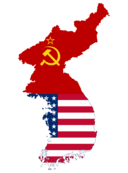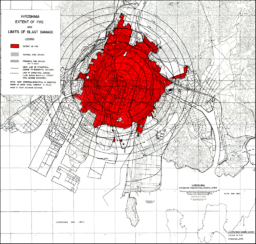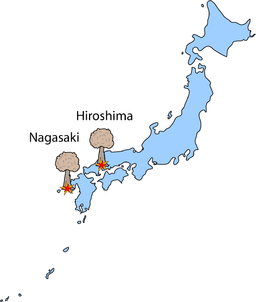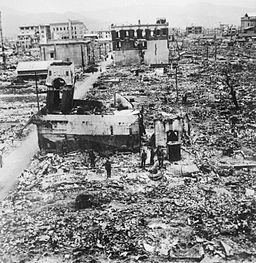
This novel takes place during 1945 and presents the perspective of a young girl, 8 years old, who is part of a Japanese family, living in Korea. Koreans were fighting for their independence from Japan while the US and England were also fighting Japan.
Go here for a further summary of the book
The book received a Courage of Conscience Award from the Peace Abbey
About the Author
Yoko Kawashima Watkins
Essential Questions
1. What is courage and what does it look like? (Consider the character of Ko, the hardships this family faces, and the way Yoko and Ko handle themselves in their schools.)
2. How does the history of a nation and the conflicts it endures influence the identity of an individual? (Consider pulling stories that use a young adult's perspective on what happened in the US in 9/11, the Irish famine, the Holocaust, Islam-Palestinian conflict, and the war-ridden middle east).
Enduring Understandings
1. Students will understand that courage means standing up for what one believes in even in the face of adversity. Although Yoko did not seem courageous at first, she learns to adapt and does not ever become ashamed of her heritage and the hardships that her family has faced once she begins school.
2. Students will understand that their nation does have an impact on their perspectives, opinions, and values.
3. Students will better understand the conflict between Korea and Japan after WWII
Themes:
- Survival
- Sacrifice
- Hope
- Growing up a refugee
- Pride in one's nationality
- Struggle and Determination
- The power of education
- Violence of World War II
- Customs and Honor
Korea is located on the eastern most side of the continent of Asia. It shares a border with Russia and China. The meeting spot for Yoko, Ko, and their Mother to wait for their brother, Hideyo, the city of Seoul, is now part of South Korea.

Book Controversy
Are We Comfortable Teaching This? Using Banned Books as a Vehicle for Teaching about World War-Era Japan & Korea, Multicultural Education, 2011
Joint Letter to Dover-Sherborn School Committee About Challenges to So Far from the Bamboo Grove, National Coalition Against Censorship, December 22, 2006
Korea experienced a push and pull from the Japan, Russia, and the US, all of whom were fighting for control and influence of Korea.
- As Hideyo leaves the Kim's house, he thinks to himself that he has the best chance for safety after he crosses the 38th parallel.
- This is because after the way had ended, the US claimed control of everything South of this mark and the Russians would have control of everything North of the 38th parallel.
 One way of opening this unit could be to look at Columbia University's primary source document of the Korean Communist party manifesto (the group that Yoko and her family fear most in the novel) and doing a class simulation that explains the socialist government and the restrictions that Japanese people forced upon the Koreans to help students understand why the Koreans formed such a group.
One way of opening this unit could be to look at Columbia University's primary source document of the Korean Communist party manifesto (the group that Yoko and her family fear most in the novel) and doing a class simulation that explains the socialist government and the restrictions that Japanese people forced upon the Koreans to help students understand why the Koreans formed such a group.
http://afe.easia.columbia.edu/ps/korea/korean_communist_party.pdf
See some of the restrictions here
 |
| US Strategic Bombing Survey |

Historical Connections: Atomic Bombs
Link to the resourceforhistoryteachers wiki for information about the use of atomic bombs against Japan at the end of World War II.
Columbia University offers more information about what lead up to the US dropping the atomic bombs
- These bombs are mentioned in the novel and marked the end of the war.
- When Yoko and her family reach Japan, their Mother ventures to her parents' town only to find it completely destroyed by the bomb.

The atomic bomb was dropped on Hiroshima on August 6th, 1945.

- It destroyed about 60% of the city and killed an estimated 70,000 people at the moment it exploded.
- Three days later, on August 9th, another atomic bomb was dropped on the city of Nagasaki.
- 40% of the city was destroyed this time and about 39,000 people were killed in the explosion.
- Japan's military did not surrender until August 14th, 1945.
 See also the book Hiroshima by John Hersey
See also the book Hiroshima by John Hersey
 Teaching the Book
Teaching the Book
So Far from the Bamboo Grove, an autobiographical tale, gives Yoko the chance to tell her story of how she "competed with life and death when young. And...won".
Consider having students writing a short autobiographical tale in which they convey a moment that has shaped their lives the way that this experience forever impacted Yoko. Everyone has a story--allow your students to tell you theirs.

Yoko Kawashima also wrote a collection of Japanese traditional folktales that she remembers being told throughout her childhood. This collection can be purchased on amazon.
http://www.amazon.com/gp/product/0027925250/ref=olp_product_details?ie=UTF8&me=
Also, consider using Dr. Seuss's The Sneeches as an opener/hook. It's a story with underlying themes of racism and mistreatment--similarly to the cruelty experienced in the conflict between Korea and Japan on both sides. Stories of youths facing adversity within their nations would also be beneficial extended learning projects (see insider cover of book).
For more accounts of children growing up amidst war and conflict in their home nation, see the UNICEF State of the World's Children 1996 50th Anniversary stories. See the "Panels" section for short stories.
http://www.unicef.org/sowc96/contents.htm
 |
| Yale University Art Gallery |
 Recorded Oral Histories of Korean individuals about their experiences with their country being colonized by Japan from Columbia University.
Recorded Oral Histories of Korean individuals about their experiences with their country being colonized by Japan from Columbia University.
http://afe.easia.columbia.edu/ps/korea/colonial_experiences.pdf
Mt Fuji plays a huge role in Japanese identity. Mt. Fuiji symbolizes Yoko's homeland and her dreams of going to see her grandparents.

- Have students create a Life Map of their own
- Much can be done with point of view in this novel. The novel begins in a flashback and when Yoko is telling her story, she is writing in first perspective. In some chapters, she is speaking from Hideyo's perspective. Have the class create a timeline of the novel so they can track perspective.
- What does is mean to be a survivor? What qualities must you have? What behaviors do they exhibit? Does Survivor =Hero? Is Yoko a hero? Ko? Mother? Hideyo?
Before beginning to read the novel, give students the opportunity to explore a few selected apps to learn more about the culture, geography, international relations, and economy that existed in Korea and Japan during 1945.
Extended Learning Opportunity: Research the governments and the relations between North Korea, South Korea, and Japan today
Using Apps with Children's and Young Adult Literature
So Far from the Bamboo Grove: Japanese and Korean Culture, WWII Simulations, and Maps
https://itunes.apple.com/us/app/world-war-2-history-quizzes/id740556622?mt=8
https://itunes.apple.com/us/app/maps-our-world-geography-quiz/id658902767?mt=8
https://itunes.apple.com/us/app/fotopedia-japan/id476323468?mt=8
https://itunes.apple.com/us/app/world-conqueror-1945-lite/id435373843?mt=8
https://itunes.apple.com/us/app/koreanradios/id418682975?mt=8
https://itunes.apple.com/us/app/fotopedia-north-korea/id438412750?mt=8
Link here for more information about the blog or to sign up for a free email subscription (great info everyday!)
Comments (0)
You don't have permission to comment on this page.